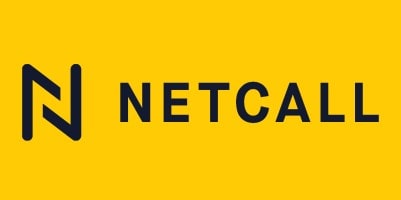The Mapping Process in the contact centre: As-Is vs To-Be: Where do you Start?
Craig Willis, Head of Process Improvement Solutions at Netcall gives his advise to navigate this potential minefield

Whatever the reason for mapping processes, it’s essential to be clear on whether you start by mapping the As-Is or the To-Be process. In this article we’ll explore the difference between As-Is and To-Be, providing a guide to help you to get started.
We’ll help you determine whether you need to start by mapping the As-Is process, or whether it’s safe to jump straight to the To-Be. With this information, you can confidently agree the approach before you start working on the processes – which avoids distracting and time-consuming debates at the beginning of a workshop.
 What do we mean by As-Is and To-Be?
What do we mean by As-Is and To-Be?
Let’s go back to the very beginning and make sure we’re clear about how we define As-Is and To-Be. In this case, we’re talking about business processes and the need to map and understand them.
As-Is process mapping is about understanding the here and now. It tries to answer the question:
– What is happening in this process right now?
– How does it work today?
As-Is process mapping is also known as the ‘Current State’ and can include lots of other information about the business.
To-Be process mapping is where we start to explore the future. This time it’s trying to answer the question:
– How should this process work tomorrow?
– What’s the most effective process?
You may hear To-Be process mapping called ‘Process Design’ or ‘Future State’ mapping. It might be that we’re making minor improvements to an existing process, or designing a process that doesn’t even exist today.
The disagreement many have is whether there is value in spending time documenting the As-Is or whether you should jump straight to the To-Be. This decision really depends on the individual project, but it’s up to you to make that clear from the beginning.
 Why are you mapping processes?
Why are you mapping processes?
The first thing you need to ask yourself is – what are you mapping these processes for? These typically break down into the following types of process mapping:
– Investigation to see what can be improved
– Documenting for compliance, quality or training reasons
– Understanding requirements for designing a completely new process
– Exploring opportunities to improve a process and identify areas where automation would add value.
Effectively, it’s only when you are designing a completely new process that you can legitimately have a case for going straight to a To-Be. Even if this is the case, you’d need to do some investigation beforehand to understand what the organisation already knows about this area. You may need to understand if there are any constraints, but this doesn’t necessarily require process mapping.
Mapping processes purely for the purpose of creating and maintaining documentation, such as for training or consistency reasons suggests an As-Is approach. However, you may well be documenting processes for the first time. In which case, you are capturing As-Is processes, but with small improvements as the teams come together and learn from each other and discuss the best way to do things. You are building a future state process, which we tend to call the As-Is Plus.
The other two types of project, investigation and requirements gathering, absolutely need some degree of As-Is capture and analysis.
Sometimes, there are issues in recognising the value of conducting the exercise. It can be time-consuming and focuses too much on the past, when everyone is excited about the future of the project. However, it is important for us to understand the here and now, so we can understand specifically what needs to change.
Therefore, any project that aims to change the way something works today really needs some level of As-Is understanding.
 Do we really understand today’s problems?
Do we really understand today’s problems?
Building a shared understanding of the problems you’re trying to solve is essential for success. When we understand today’s problems, people will buy into the need for change. However, one of the biggest challenges here is whether people have the same perception of those problems.
People normally describe problems in terms of the symptoms they experience. Part of our job is to help identify the root cause of those problems. But if we do that away from the stakeholders they will still see the symptoms they experience as different problems. Our job is to show stakeholders how a solution will solve the problem and relieve their symptoms.
Understanding today’s problems is not just about the project team. It’s also about ensuring everyone else shares that understanding. As-Is process maps are a powerful way of investigating and validating problems with the wider business. Indeed, that workshop you organise and the conclusions you make together is key to ensuring that everyone is on the same page going forward.
Is there a clear business case for all stakeholders? Having identified and clarified the problems, it’s possible to build a business case for improving. The impact of those problems can be measured and then used to assess the viability of potential solutions.
The point here is to ensure that there is a clear business case at all levels. A business case that increases revenue or profits is great, but if it requires individual stakeholders to work harder with no additional pay, they may not be so keen to implement it.
This is why having alignment on the problems is so important, it allows you to understand how each problem impacts individuals and therefore create a clear business case at each level.
Is change management required?
Here, we focus on implementation plans. What do we need to know to make sure that the project will be a success? Where are the gaps and how are we going to fill them?
The only way to truly identify the gaps is again to understand how things work today, who does them and what with? That is an As-Is process. You need that to compare it to your To-Be to identify gaps in personnel, skills, systems and more.
So… As-Is or To-Be?
If you answer yes to any of these questions, the chances are you need some sort of As-Is process before continuing. The cost of not doing so can be expensive. It is your role to ensure that the organisation understands the value in taking the time to go through the As-Is. The key is to address that question up front, as part of your introduction: “Today we are here to map the …. because this will give us ….” Making sure that it is understood before your workshop kicks off, will save you valuable time and ensure stakeholder satisfaction.
Liberty Spark is our process improvement solution. It is designed specifically to make process discovery and analysis easy. It uses UPN (Universal Process Notation) – the simplest way to describe a process. This means that everyone can understand and create a process map. All you need to know is how to describe what happens and why. It’s simple to map out processes as people describe their actions.
Try Liberty Spark
Any data such as roles, software used, durations, costs, risks, requirements and many more can be captured against the process and generate rapid insights. This makes As-Is capture much quicker and also quickly identifies opportunities for your To-Be design.
![]()
 Craig Willis is Head of Process Improvement Solutions at Netcall
Craig Willis is Head of Process Improvement Solutions at Netcall
To Download the As-Is vs To-Be guide Click here
Over 600 organisations in financial services, insurance, local government and healthcare use Netcall’s Liberty platform to make life easier for the people they serve.
Liberty Converse is the next-generation, AI-powered contact centre solution that redefines how businesses engage with their customers. The cloud-native platform extends its robust contact centre software capabilities to harness the power of intelligent process automation and rapid application development, setting Netcall apart in the competitive landscape.
 Liberty Converse is part of Netcall’s Liberty platform which provides cut-through process automation and communications solutions, helping organisations to achieve their business goals faster in a rapidly changing world. Liberty offers user-friendly, AI-driven tools to create business applications that automate processes, streamline workflows and enhance both customer and employee experiences.
Liberty Converse is part of Netcall’s Liberty platform which provides cut-through process automation and communications solutions, helping organisations to achieve their business goals faster in a rapidly changing world. Liberty offers user-friendly, AI-driven tools to create business applications that automate processes, streamline workflows and enhance both customer and employee experiences.
For additional information on Netcall view their Company Profile



